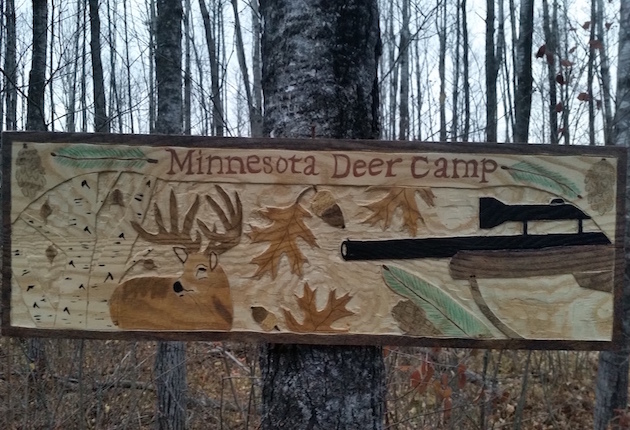Minnesota’s firearm deer season is just around the corner, November 4, and the excitement is building everywhere. It’s the single largest hunting event in the state, with about 500,000 hunters participating.
I was at camp last Friday. Neighboring landowners were busy checking trails cams, stands, trails, hauling in supplies, and chasing the mice out of their cabins. Personally, I was getting in one last grouse hunt with friends before the army of blaze-orange-clad “pumpkins” descends upon the forest, marking the time when no grouse hunter with half a brain dares venture forth into the woods. (Three of us harvested three grouse and five woodcock in six hours).
I was a bird hunter long before I was a tree stand deer hunter. I’m geared to keep moving, just like a good bird dog, which never stops. So sitting in a deer stand for long periods is a real challenge, especially if it’s cold like it often is in northern Minnesota; and especially in wolf country, where the deer are scarce and skittish.
Stand deer hunting is an exercise in hope and endurance, and you need both to withstand the hours of sitting alone up a tree. And if it’s cold, after about 30 minutes the heat generated from the walk into your stand will have been sucked away into the great void around you. That’s when you start scrunching your toes together to keep them warm, doing large limb isometrics to generate heat, rubbing hands together and standing a bit to keep warm . . . all while desperately trying to avoid making any sound that will scare off the ever-vigilant whitetail.

You have to be hopeful to man a stand for hours on end.
Scanning the same small, silent bit of empty country over and over again for hours for deer can become a hope-draining drudgery, the silence broken only by the occasional raven flying overhead, it’s croaking echoing through the bare trees and emptiness. It reminds me of assembly-line factory work sometimes, but more beautiful and still.
Of course, the hope of a backstrap payoff helps keep your mind sharp and eases the boredom. The memory of the huge adrenaline rush that happens when you suddenly hear a deer’s hoof fall coming ever closer through the dry leaves can keep you in the stand a bit longer or for another day.
The thrilling recollection of actually spotting a deer, raising your rifle, and bagging one is what often keeps me coming back to the stand and wrestling again with hope, endurance, despair, and uncontrolled shivering. Once I lose hope that a deer might come by and the last vestiges of heat have drained from every part of my body, I’m finished, and the thought of the cabin, its company, and hot, or cold, drinks becomes overwhelming.
And if a deer, even a magnificent buck, is spotted in range, well, a hunter must reverse gears and shut down the excitement as much as possible lest he scare the beast with movement or noise, sending your long-sought-after prize leaping into the woods to disappear. See ya!
Experienced deer hunters know hours and days spent on the stand is what produces venison roasts bubbling in the oven and stories to brag about at camp.
I’M READY
Hope and endurance during the lone vigil that is stand hunting can be bolstered somewhat by preparation. I’ve cut some new trails at camp this year, and the deer are using them, evidenced by trail cam photos. I’ve seen twins this fall, and the state is allowing tag holders in my zone to bag a buck or doe this year—all signs the population has increased. (Last year it was bucks-only in my zone unless you drew a scarce doe tag).
I’m staying away from camp these next two weeks to stop disturbing the deer with the considerable racket of grouse/woodcock hunting that has gone on the last five weeks. Also, the clear cuts of four years ago have grown into thick “doghair” aspen that deer love for refuge. I am mentally preparing myself for the lonely, cold vigil atop my stand.
The ravens will be there, too, waiting and watching, hoping for a shot that’s true and a gut pile to help them endure the long, cold, dark winters of Minnesota.

